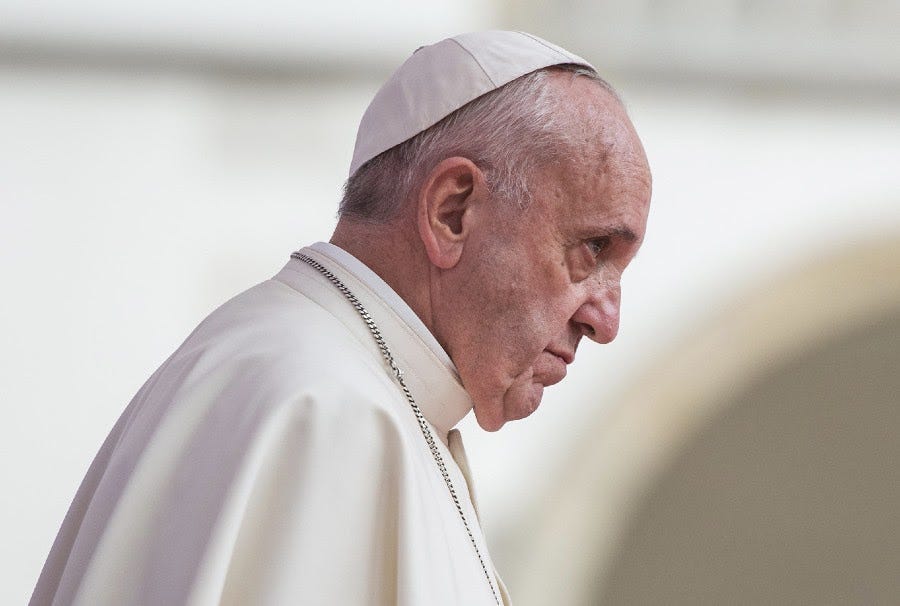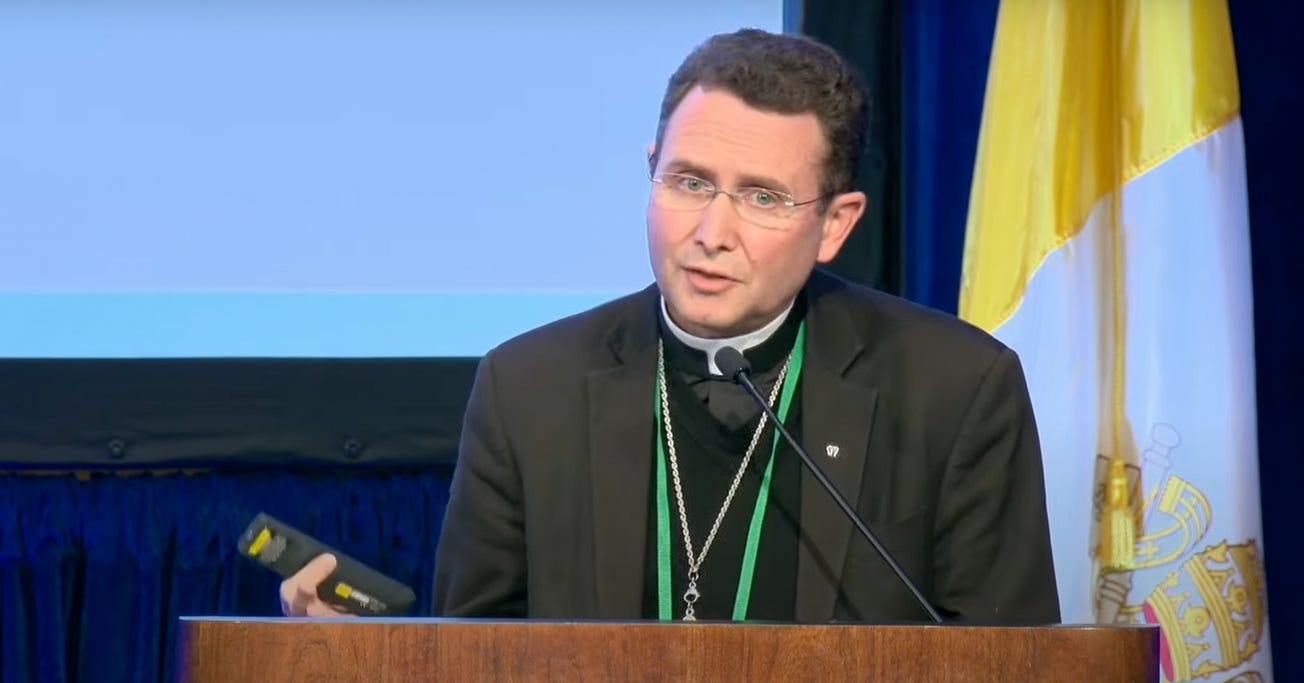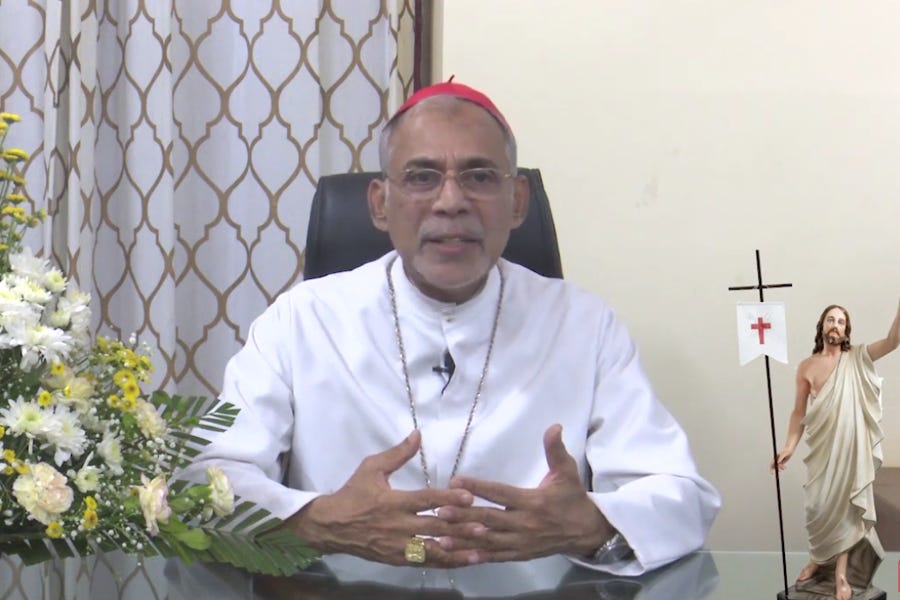What happened?
While the pay cuts apply to all senior officials, and all clerical and religious employees at every level, the motu proprio did not include lay men and women working in the lower Vatican salary bands.
Why does it matter?
The decision by the pope comes a month after he approved a Vatican budget forecasting a budget deficit of ten of millions of euros for 2021. In the public presentation of that budget, staff costs were the largest expense of the Holy See.
What does it mean?
The salary cuts follow hiring freezes and other cost cutting measures taken by the pope in previous years. The announcement, which will impact lay staff and priests working in all curial departments and for the Vatican City state, is a sign of how serious the Vatican cash crunch is, and how seriously the Secretariat for the Economy is taking the matter.
Read the full story below.
Pope Francis’ decision to cut pay across the Vatican will heighten concerns that the Holy See is teetering on the brink of financial crisis.
The 2021 budget, approved by the pope last month, forecast a 49.7 million euro shortfall. That budget deficit rises to 80 million if restricted funds like Peter’s Pence, the annual global collection to support the work of the pope, are factored out of the finances.
The salary reductions apply to all levels of curial and Vatican City employees, but are staggered in line with the principles of “proportionality and progressiveness,” meaning that more senior officials are set to see a greater reduction in their pay.
Cardinals in Rome receive a monthly stipend, called the Cardinal’s Plate, which has been set at around 5,000 euros a month, just over $70,000 per year. By custom, cardinals living in Rome are also given grace-and-favor apartments in Vatican-owned buildings.
Under the terms of the motu proprio, their pay will be cut by 10 percent, effective immediately.
Other high ranking officials — those who are in charge of Vatican departments at the rank of under-secretary and up, but are not cardinals — have been given an eight percent pay cut from April 1.
Clerics and professed religious working in Vatican departments at the lowest two executive pay bands, or at the 10 non-executive pay grades, will receive a three percent salary reduction. The new law does not affect lay staff members at those levels.
Vatican salaries are, as a general rule, lower than comparable jobs in Rome or other Western capitals, but employees granted Vatican City citizenship for the duration of their employment benefit from tax-free shopping within the city state and do not pay income tax.
Among clerics, pay cuts are likely to hit hardest for priests sent to the Vatican from poorer dioceses or religious orders. It is customary for many American and other Western clerics in staff positions at the Holy See to receive a stipend or other benefits from their home dioceses as a supplement to low Vatican salaries.
Contrary to popular misconception, most priests do not take a "vow of poverty." While members of religious orders do so, secular priests — that is, those incardinated in dioceses — receive salaries for their ecclesiastical positions, and are responsible for a greater share of their own living expenses, including a portion of their retirement needs. When a member of a religious order earns a salary, the money is usually sent directly to the community, and is often relied upon for the support of several members.
The bulk of the salary cuts are not expected to fall on lay employees, but it is worth noting that the curial department with the largest budget is the Dicastery for Communications, which is led by a layman, Paulo Ruffini, and includes the Vatican’s editorial director, layman Andrea Tornielli, among its senior staff.
While all the salary reductions will be in force by the beginning of next month, the motu proprio does allow for individual staff members to ask for an exemption if they can “provide evidence that he cannot meet fixed expenses related to his own health or that of relatives up to the second degree [immediate family].” Those exemptions will have to be re-approved annually.
The cost-cutting effort is the latest action taken against a long-expected income shortfall for the Vatican, due in part to the effects of the coronavirus, which shuttered Vatican museums and kept tourists and pilgrims away for much of the last year. But, as the pope noted in his motu proprio, deficit spending “has characterised the economic management of the Holy See for several years.”
“Although the Holy See and the Vatican City State are adequately capitalized,” said the pope, “it is necessary to ensure sustainability and balance between income and expenditure in current economic and financial management.”
For the 2021 budget, the Secretariat for the Economy had already announced significant progress in bringing costs under control, with a 14% — 24 million euro — reduction in non-staff operating expenses compared to 2019.
Even after the salary cuts, there will be a large budget shortfall which will have to be made up from the Holy See’s reserves. It is not clear how much cash the Holy See actually has in reserve, and, in fact, that may not even be clear to the Vatican’s financial administrators.
Many of the reserves have recently come under the direct oversight of the financial secretariat following a December 28 order from Pope Francis, which stripped control of Peter’s Pence and other discretionary funds and investments from the Secretariat of State.
That move means that 2021 will be the first time that all curial assets and accounts will be centrally held and managed by APSA, the Vatican’s sovereign wealth manager and central reserve bank.
The Secretariat for the Economy was established by Pope Franics shortly after his election in 2014, and its work is a key part of his stated agenda for Vatican financial reform. The department has been led by Juan A. Guerrero, S.J. since November, 2019.
Guerrero was appointed to succeed Cardinal George Pell, whose term of office had expired the previous February. At that time, Pell was in Australia awaiting sentencing following his trail on charges of sexual abuse. In April of 2020, Pell was exonerated of all charges and released, having spent more than a year in prison. Despite his initial conviction, Pope Francis never formally removed Pell from his position as prefect, instead Pell’s position lapsed at the end of his five-year term.
Since succeeding Pell, Guerrero has moved forward several attempted reforms which were put on hold when the cardinal took a leave of absence in 2017 to return to Australia to stand trial, and has insisted that Vatican finances need to be “a house of glass.”
In an interview with the Vatican’s official news service in October, Guerrero said he was aware of the ongoing reporting on financial scandals centered on the Secretariat of State and that he “reads the newspapers” like everyone else.
“It is possible,” he said, “that, in some cases, the Holy See was not only badly advised but also cheated.”
“I believe we are learning from past mistakes or recklessness,” said Guerrero.





